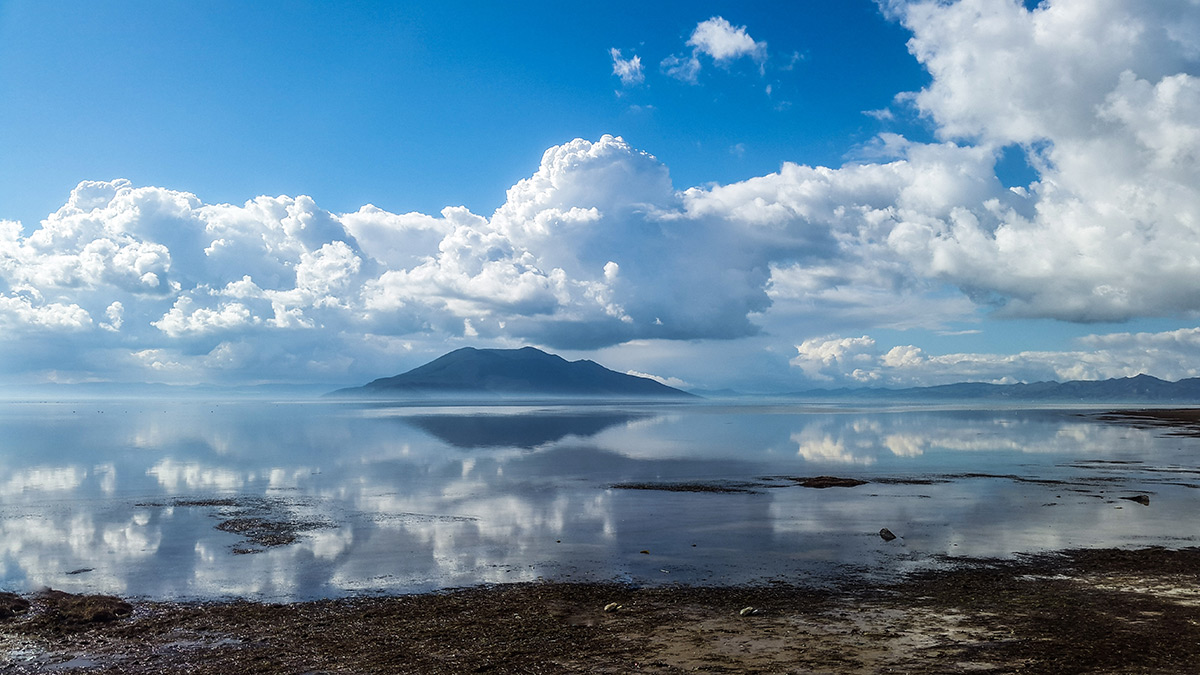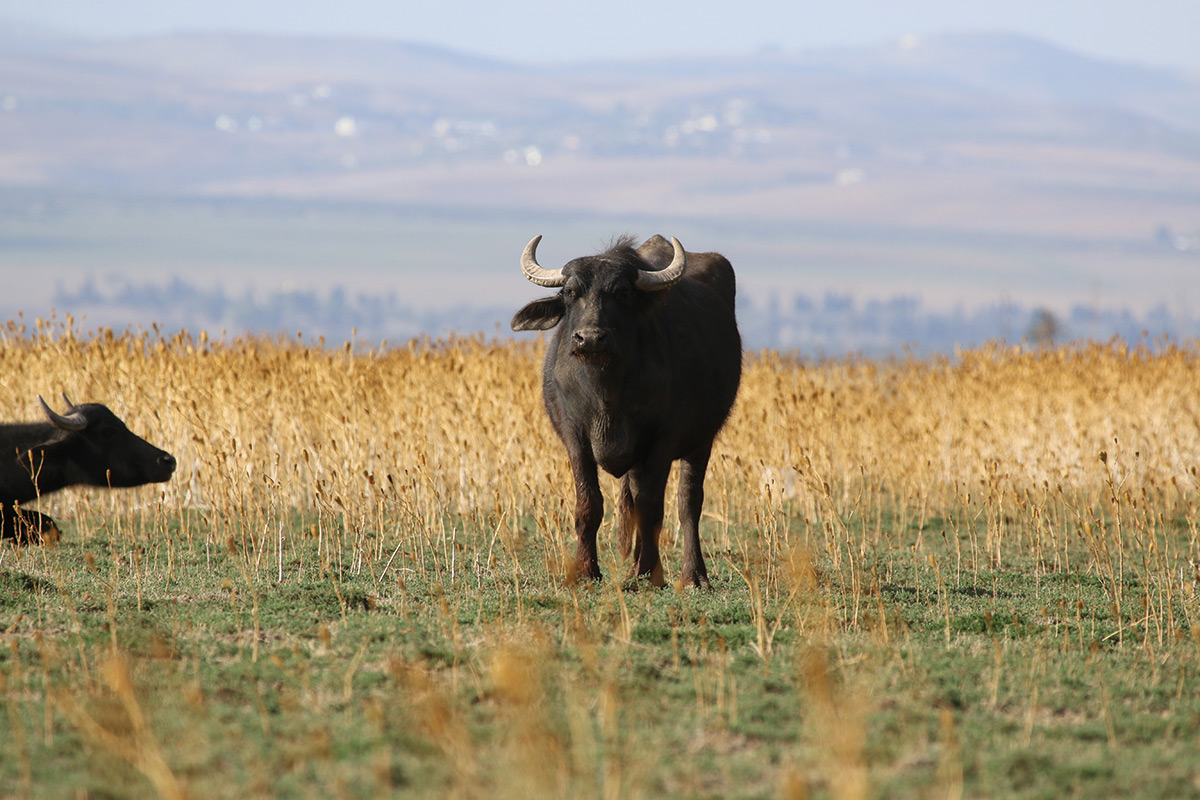In 1980 the lake and mountain of Ichkeul were declared UNESCO World Heritage Sites, then converted into a national park covering an area of 12 600 hectares. It is a remarkable destination for wildlife. The vast body of water is the last trace of a chain of freshwater lakes that once stretched across North Africa.

A solitary green mountain rising out of the plains, a vast natural lake in a semi-arid land… Ichkeul National Park presents a fascinating landscape full of mystery.
It is also a remarkable destination for wildlife. Two hundred and twenty nine animal species have been found there as well as more than five hundred species of plants.
But the main reason for its inclusion on the great international lists (World Heritage, Biosphere Reserve, Ramsar Convention), is the body of water there, the last trace of a chain of freshwater lakes that once stretched across North Africa. Both freshwater and saltwater lake depending on the season, its exceptional ecosystem has made it into a major wintering ground for migratory birds.
At the first caress of spring, the lake is a mirror. Submerged shrubs pierce the surface. The fresh water reaches the foot of the mountain whose intense green slices the blue of the sky.
Numerous waterfowl, such as the purple heron, have their habitual residence here. The white little egret, the fierce western swamphen make their nests among the reeds.
When the weather is fine, thousands of visitors come to experience the calm and splendour of Mount Ichkeul. A lush mantle of wild olive and mastic trees extends across its flanks, concealing wild boar, jackals, foxes and hedgehogs.
Tree spurge forms light green bushes. Beautiful flowers appear, cyclamen, iris and various wild orchids.
Passerines prepare their nests, while birds of prey soar over the mountain: Bonelli’s eagle, Egyptian vulture, short-toed snake eagle. At the bottom of a cave that has been picked as a dwelling, a colony of bats awakens.
In the surrounding marshes several dozen water buffalo live in a semi-wild state; a herd with extremely ancient origins, strengthened by the importation of certain Italian specimens.
At the base of the mountain, little by little evaporation dries out the lake. As the level drops, millions of cubic metres of saltwater pour in from Bizerte lake, a seawater lake which is connected to Ichkeul by the small wadi (river) Tinja. With the help of evaporation, the salinity can increase past the level found in seawater.
With the first heavy rains, the wadis coming from the Mogod mountains – one of the wettest regions of Tunisia – now pour millions of cubic metres of freshwater in the lake. Ochre, turbulent waters spread out at the base of the mountain, the bottom constantly stirred by the winds from the North West.
Soon the overflow from Ichkeul lake will pour into Bizerte lake via the wadi Tinja, whose current changes direction.
At the end of winter, the lake is a vast body of fresh water.
In the past, Ichkeul lake attracted, in certain winters, more than three hundred thousand ducks and coots, a density five to seven times greater than those of the most famous wintering grounds of the Mediterranean basin.
A huge variety of coots and ducks would gather there; a crowd made possible due to the abundance of pondweed, a highly nutritious aquatic plant, whose growth was encouraged by the alternation of fresh and saltwater.
As for the marshes, flooded each winter, they would receive over ten thousand greylag geese.
But this was a fragile ecosystem, in a region of the world where changes happen fast and the climate is temperamental. Throughout the nineties, the balance was disturbed by a series of severe droughts, and by the construction of several reservoirs upstream.
The increased salinity reduced the quantity of pondweed, the marshes dried out; the famous birds of Ichkeul were forced to seek out new wintering grounds.
The site was placed on the list of World Heritage in Danger for ten years, before being withdrawn in 2006.
This region of the North is now equipped with a sophisticated network of dams that communicate with each other, storing the surplus of the rainy years to supplement the dry ones. The needs of the lake, precisely calculated using mathematical models, are today taken into account in the management of these dams.
Time will tell if the greylag geese and wild ducks find their way back to the Park that they made famous.
At its highest level, the lake covers an area of 8 500 hectares. In summer, it depth reduces to less than a metre. The mountain peaks at 511 m.
42°C thermal springs, used since Roman times, were until recently used to heat hammams, the destination of a pilgrimage each spring.
Marble quarries, today out of use, have taken bites out of the flanks of Mount Ichkeul, a dolomitic massif pierced through by several caves. Beautiful residences in the medina of Tunis are decorated with this marble.
Several dozen water buffalo live in the marshes. Today semi-domesticated, they are descended from the wild animals that populated the area in ancient times, and several specimens of buffalo imported from Italy over the most recent centuries. They were once considered game – the park was a royal hunting reserve from the 13th to 19th century.

In summer, many birds nest in the mountain: the blue rock thrush, the flycatcher, the scrub robin; the Moussier's redstart, which lives only in North Africa; and even some varieties of swallows.
In winter, the robin, the blackcap, the starling and the song thrush come to feed on the fruits of the wild olive trees.
Cattle, sheep and goat farming ensures the livelihood of some of the inhabitants who live in the douars (small villages) on the mountain.
© G. Mansour, “Tunisie, patrimoine universel”, Dad Editions, 2016
Ichkeul National Park was declared a UNESCO World Heritage Site.
More about the World Heritage Sites in Tunisia